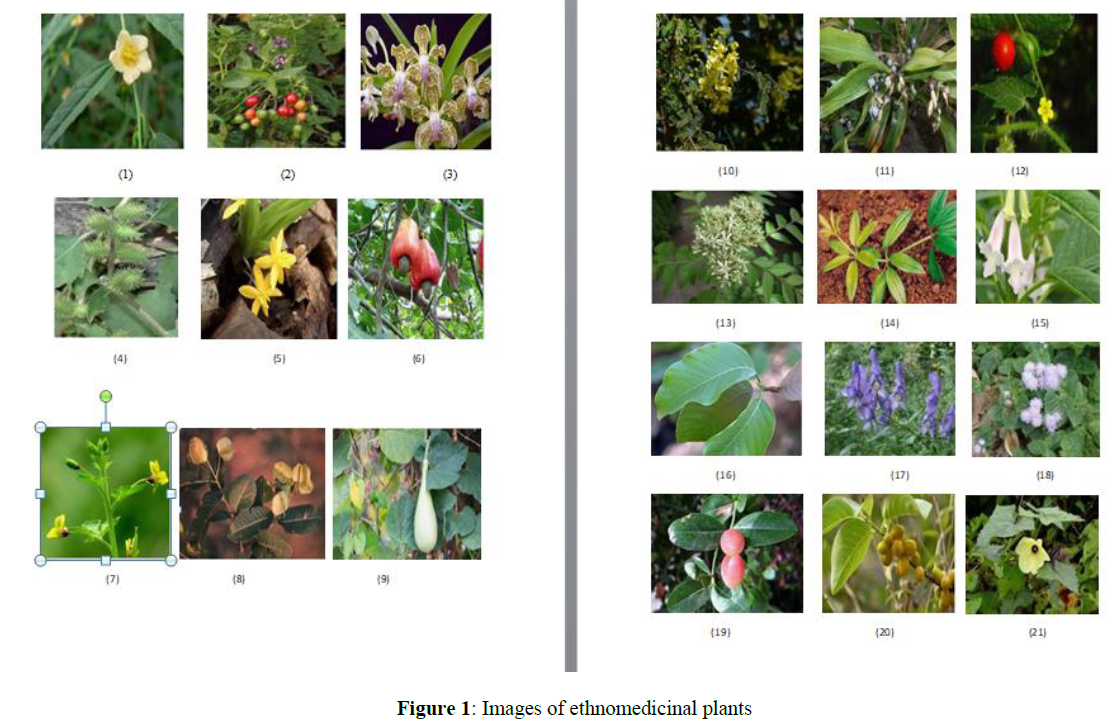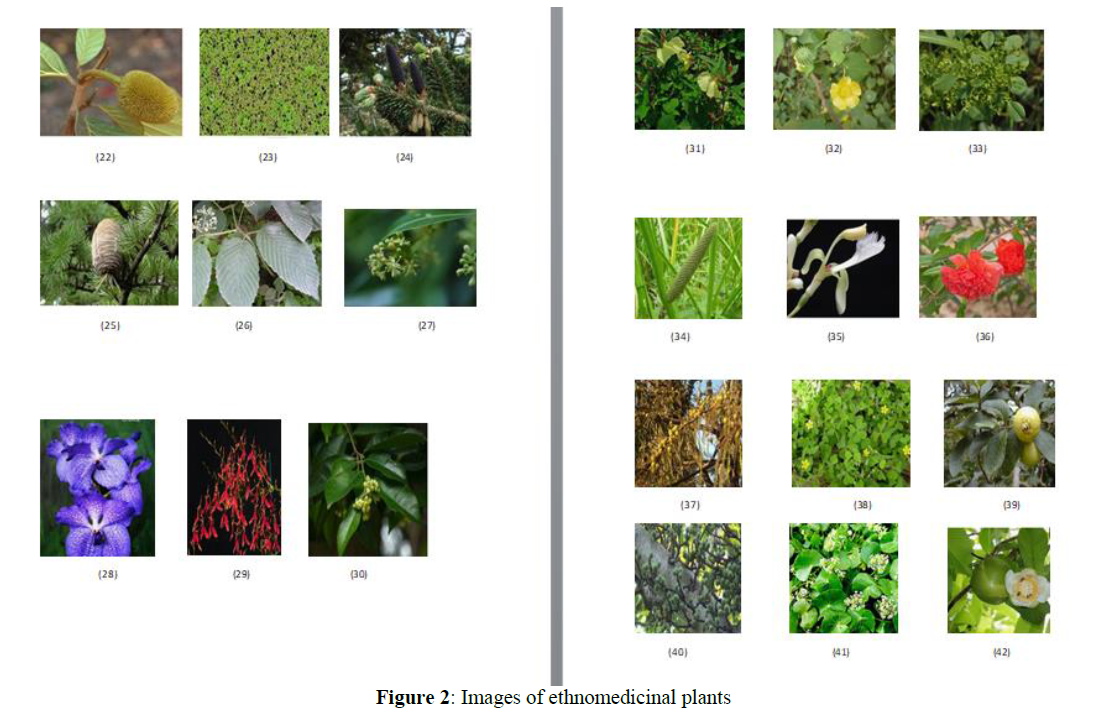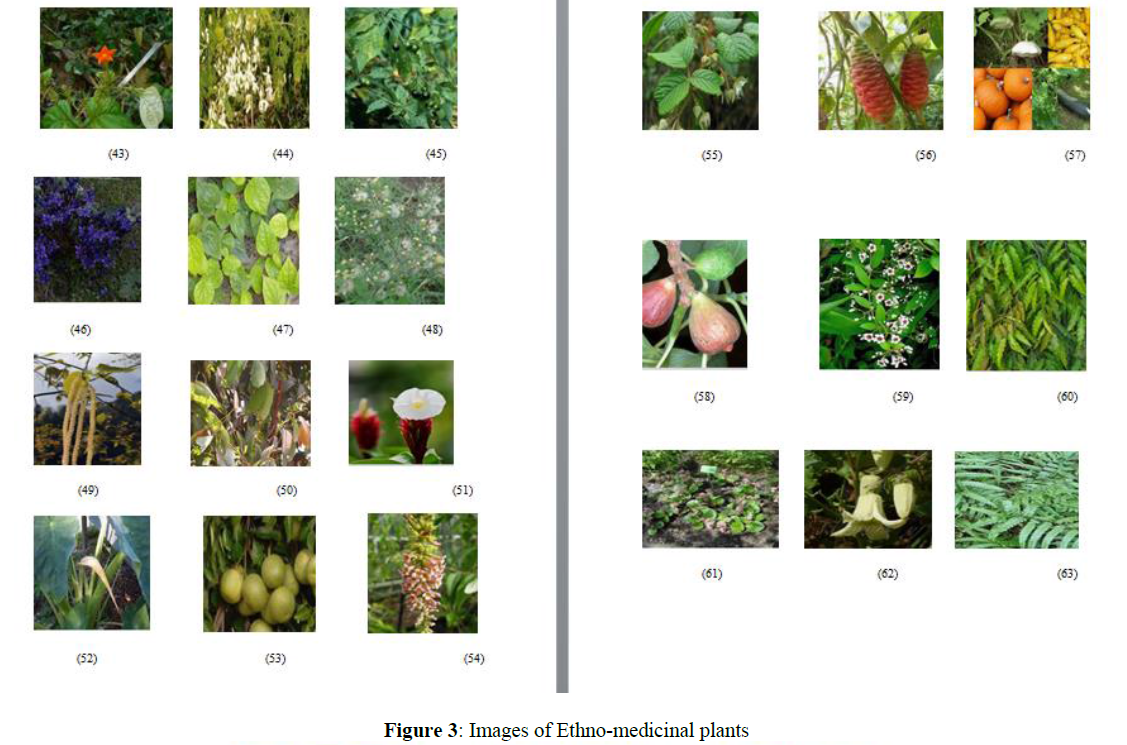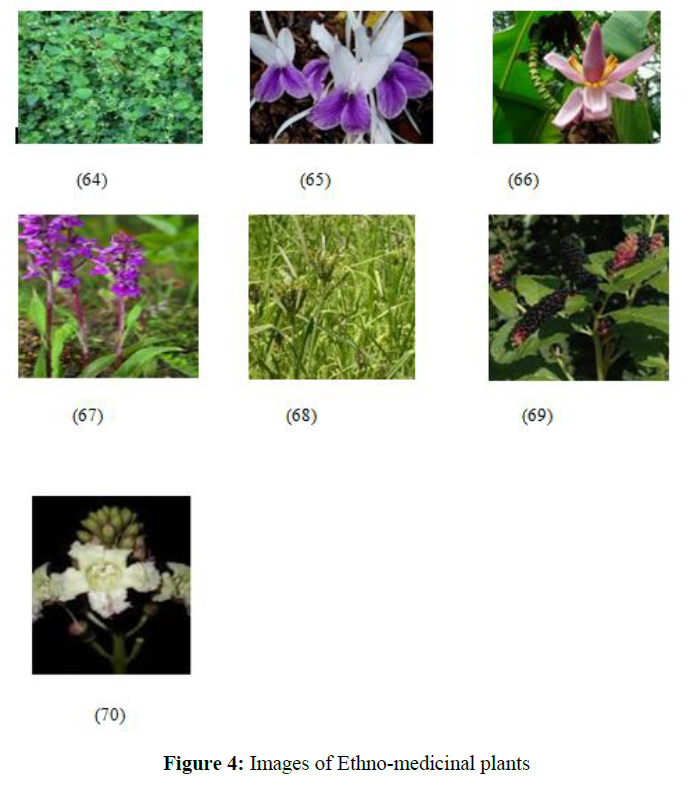Review - Der Pharma Chemica ( 2021) Volume 13, Issue 7
Phyto-Pharmacological Aspects of Ethnomedicinal Plants Found in Himalayan Region: A Systematic Approach Towards Drug Natural Resources
Chandrika sharma1* and Dr. Bapi Ray Sarkar22Department of Pharmaceutical Technology, University of North Bengal, Darjeeling, India, India
Chandrika sharma, Department of Pharmaceutical Technology, Himalayan Pharmacy Institute, Majhitar East Sikkim, India, Email: chandrikasharma323@gmail.com
Received: 17-Apr-2021 Accepted Date: Jul 22, 2021 ; Published: 28-Jul-2021
Abstract
The northern part of India has great diversity of medicinal plants due to its geography and ecological marginal conditions. These traditional systems have been curing disease since 3,000 years. With the demand for these medicinal plants, most of the plant populations have been depleted, indicating a lack of ecological knowledge among communities using the plants. Thus, an attempt was made in this study of ethno medicinal plants, to determine their availability in the growing sites, and to inform the communities about the sustainable exploitation of medicinal plants in the wild. The Himalayas have a great wealth of medicinal plants and traditional medicinal knowledge. Medicinal plants have played an important role of primary health care system among the local people of Himalayan region. The present paper is a study of the traditional knowledge of medicinal plants and its use by local people of Himalayan region. Due to its unique geographical location and different climatic condition, it has rich biodiversity and variety of plant species. The present paper focuses about the indigenous knowledge of different medicinal plants used in the Himalayan region ethno medicinal uses of 70 medicinal plant species along with botanical name, family, local name,chemicals,part used and mode of treatment are given in this paper.
Keywords
Medicinal Plants, Traditional Knowledge, Ethnomedicinal, Phyto-Pharmacological
Introduction
Natural products, including plants, animals and minerals have been the basis of treatment of human diseases. History of medicine dates back practically to the existence of human civilization. The current accepted modern medicine or allopathy has gradually developed over the years by scientific and observational efforts of scientists. However, the basis of its development remains rooted in traditional medicine and therapies. The history of medicine includes many ludicrous therapies. Nevertheless, ancient wisdom has been the basis of modern medicine and will remain as one important source of future medicine and therapeutics. The future of natural products drug discovery will be more holistic, personalized and involve wise use of ancient and modern therapeutic skills in a complementary manner so that maximum benefits can be accrued to the patients and the community [1].
The traditional medicine is widely used for various human ailments. The usage of herbal medicine could be even traced right from the beginning of mankind. Man tried to know about the plants around him to satisfy his basic needs such as food, shelter and clothing. All plants in this planet are important because of its medicinal qualities. Traditional system of medicines has become significantly more popular all over the globe because of the effective and curative nature for chronic disease with less toxicity. Herbal medicines are not a simple task since many factors influence the biological efficacy and reproducible therapeutic effect [2].
Herbal medicines have been used in traditional medical practices for centuries. The usage of herbs and a medicinal plant to cure various diseases was in practice from the time immemorial. They have been used since ancient days as the plant and plant provide a useful source of medicine and pharmaceuticals that can be used to treat not only human disease but can also be used to enhance the animal production and health, food safety and quality [3].
Herbalism also known as herbal medicine is the study of botany and the use of medicinal plants. Plants have been the basis for medical treatments through much of human history and such traditional medicine is still widely practiced today. Herbal drugs consist of all the officially recognized system of India like Ayurveda, Yoga, Unani, Siddha, Homepathy, but still 70% of India’s population still use Non-Allopathic system .so in this there is a compilation of some of the herbal medicines from different parts of India having different therapeutic use [4].
India is sitting on a gold mine of well recorded and well-practiced knowledge of traditional herbal medicine. But, unlike china, India has not been able to capitalize on this herbal wealth by promoting its use in the developed world despite their renewed interest in herbal medicines. This can be achieved by judicious product identification based on diseases found in the developed world for which no medicine is available; such herbal medicines will find easy acess into those countries. Traditional medicine tends to be practiced outside of allopathic medicine, which is the dominant system of medicine in the developed world.
Importance of traditional medicine for indigenous peoples and local communities
Traditional medicine also known as alternative, complimentary, and indigenous or folk medicine comprises knowledge systems that developed over generations within various societies before the era of modern medicine.
The world health organization (WHO) defines traditional medicine as “the sum total of the knowledge, skills, and practices based on the theories, beliefs, and experiences indigenous to different culture, where explicable or not, used in the maintenance of health as well as in the prevention, diagnosis, improvement or treatment of physical and mental illness. The WHO has referred to these system as “holistic”, i.e, that of viewing man in his totality within a wide ecological spectrum, and of emphasizing the view that ill health or disease is brought about by imbalance or disequilibrium of man in his total ecological system and not only by the causative agents and pathogenic evolution”. Traditional medicine is not only a vital source of health care, but also an important source of income for many communities. Traditional medicine include all kinds of folk medicine, unconventional medicine and indeed any kind of therapeutic method that had been handed down by the tradition of a community or ethnic group.The discovery of most of the medicinal plants is done by pre industrial communities today, and many of them are involved in domestication, collection, cultivation and management of medicinal plant source. This activity support many indigenous people and local communities, and also help in the conservation of traditional medicine [5].
Traditional medicines have been used throughout the beginning of human history and played a significant role in the treatment and Prevention of various diseases. Ancient, Indian medicinal systems viz. Ayurveda, Siddha, Unani, Amchi and local health traditions provides a strong base for the use of a large number of plants in terms of safety and effectiveness leads for the prevention and treatment of different disease conditions. Herbs & herbal formulations are used as rejuvenators, 80% of the people in throughout the world currently uses herbal medicine for primary health care according to World health organization WHO) [6].
Herbal medicine is the important component of Ayurvedic, homeopathic, naturopathic, traditional Chinese medicine and Native American Indian medicine. As per WHO, 74% of 119 modern plant-derived pharmaceutical medicines are used in ways that correlated directly with their traditional uses [7].
Methodology
We order to summarize the current evidences regarding the medicinal plant a systematic review and of the literature were taken. The data was collected through secondary sources mainly from the website of Government, State Medicine Plant Board. References from research papers, books, articles were taken for interpretation of data. Along with intensive survey of locally available information on the use of traditional herbal medicine some collected through personal interview and literature survey. The purpose of the study was not only collection but also to know the relationship of medicinal plants with the community. (Table 1)
| Sl.No | Scientific Name & Family | Local Name | Parts Used | Habitat | Chemical | Mode of administration | Therapeutic use |
|---|---|---|---|---|---|---|---|
| Constituents | |||||||
| 1 | Sida acuta | Kareta | Roots | Assam | Beta- phenethylamines | Decoction& Infusion | Dyspepsia |
| (Malvaceae) | |||||||
| 2 | Solanum dulcamara | Khab-es-salab | Fruits | Sikkim | Solasodine and beta- solamarine | Decoction | Leprosy |
| (Solanacea) | |||||||
| 3 | Vanda roxburghii | Nai-rasna | Roots | Tripura | Tannis, | Oil | Rheumatic disorders. |
| (Orchidaceae) | Sitosterol | ||||||
| 4 | Xanthium strumarium | Shankhahuli | Whole plant | Assam | Beta- Caryophyllene | Decoction | Urinary& Renal complain |
| (Compositae) | |||||||
| 5 | Curculigo orchioides | Kalimurli | Roots | Assam | Curculigo | Powder | Impotence |
| (Amaryllidaceae) | |||||||
| 6 | Anacardium occidentale | Kaju | Kernel | Assam | Linoleic acid | Fermented Juice | Diuretic |
| (Anacardiaceae) | |||||||
| 7 | Cleomeviscosa L | Hulhul | Leaves | Sikkim | Palmitic acid, Stearic acid | Paste | Wounds & Ulcers |
| (Capparidaceae) | |||||||
| 8 | Terminalia alata | Asan | Bark | Meghalaya | Arjunetin, | Decoction | Diarrhoea |
| (Combretaceae) | Ellagic acid | & Ulcers | |||||
| 9 | Lagenaria Siceraria | Kadutumbi | Leaf | Manipur | Eucalyptol,Palmitic acid | Decoction | Jaundice |
| (Cucurbitaceae) | |||||||
| 10 | Caesalpinia decapetala | Aila | Whole plant | Assam | Quercetin, beta-Sitosterol | Decoction | Carminative |
| (Fabaceae) | |||||||
| 11 | Coix Lachryma | Gurgur | Roots | Assam | beta-Sitosterol | Juice | Menstrual disorders |
| (Poaceae) | |||||||
| 12 | Mukia maderaspatana | Aganaki | Roots | Tripura | Dichloroacetic acid,saponins | Decoction | Flatulence |
| (Curcurbitaceae) | |||||||
| 13 | Murraya koenigii | Karay pak | Roots | Sikkim, | Coumarin, | Infusion&Decoction | Vomiting |
| (Rutaceae) | Carbazole | ||||||
| 14 | Rubia cordifolia | Manjit | Roots | Nilgiris | Rubiadin, | Decoction | Diuretic& |
| (Rubiaceae) | Quinine | Astringent | |||||
| 15 | Sesamum indicum | Til | Seeds | Assam | Sesamolin, | Paste (with water&butter) | Bleeding piles |
| ( Pedaliaceae) | Sesamin | ||||||
| 16 | Hymenodictyon orixense | Bhurkur | Barks | Meghalaya | Glycoside | Decoction | Diarrhoea& Antiperiodic. |
| (Rubiaceae) | loganin | ||||||
| 17 | Aconitum deinorrhizum | Safed vish | Roots | Kumaon | Aconitum,Alkaloids | Powder | Rheumatism&Cholera |
| (Ranunculaceae) | |||||||
| 18 | Ageratum conyzoides | Koobhi | Roots | Manipur | Beta- pinene, | Juice | Anthelmintic |
| ( Asteraceae) | Beta- phellandrene | ||||||
| 19 | Carissa carandas | Karonda | Roots | Tripura | Ursolic acid,Oleanolic acid | Decoction | Cough& Diarrhoea |
| (Apocynaceae) | |||||||
| 20 | Casearia graveolens | Chilla | Roots | Assam | Alkaloids, Flavonoids | Paste | Piles |
| (Flacourtiaceae) | |||||||
| 21 | Abelmoschus moschatus | Latakasturi | Seeds | Nagaland | Myricetin, | Powder | Digestive |
| (Malvaceae) | Flavonoids | ||||||
| 22 | Artocarpus hirsutus | Ayani | Bark | Manipur | Stilbenoids, | Infusion | Heal sores& Pimples |
| ( Moraceae) | Flavonoids | ||||||
| 23 | Azolla pinnata | Pana | Roots | Assam | Protein, Calcium | Juice | Diuretic |
| (Salviniaceae) | |||||||
| 24 | Abies spectabilis | Tallispatra | leaves | Assam | Abietanes, | Juice | Haemoptysis,Cough |
| (Pinaceae) | Flavonoids | ||||||
| 25 | Cedrus deodara | Deodara | Woods | Assam | Terpineol, | Decoction | Dysentry, |
| (Pinaceae) | Anethole | Fever | |||||
| 26 | Leea alata Edgew | Bon-ou | Roots | Assam | Flavonoids | Decoction | Cold& Cough |
| (Leeaceae) | Alkaloids | ||||||
| 27 | Toddalia asiatica | Dahan | Bark | Manipur | Zanthocadinanine, | Powder | Antipyretic , |
| (Rutaceae) | Pimpinellin | Bitter. | |||||
| 28 | Vanda coerulae | Bhatou phul | Leaf | Assam | Stilbenoids | Juice | Bronchitis |
| (Orchidaceae) | |||||||
| 29 | Renanthera imschootiana | Red Vanda | Leaf | Assam | Eucomic acid, | Paste | Skin disease |
| (Orchidaceae) | Phenolic Compound | ||||||
| 30 | Aquilaria malaccensis | Agarwood | Wood | Assam | Alpha- guaiene, | Oil | Sirosis, Perfumes |
| (Thymelaeacea) | Caryophellene | ||||||
| 31 | Hibiscus manihot | Usipak | Bark | Assam | Cannabiscitrin, | Paste | Wounds & Cuts |
| (Malvaceae) | Adenosine | ||||||
| 32 | Abutilon indicum | Pera- petari | Whole plant | Assam | Carbohydrates,Steroids | Powder | Demulcent, |
| (Malvaceae) | Analgesic | ||||||
| 33 | Acalypha indica | Mukuta –manjari | Leaf | Assam | Alkaloids, | Powder | Laxative, |
| (Euphorbiaceae) | Anthraquinone | Diuretic | |||||
| 34 | Acorus calmus | Bos | Rhizome | Assam | Saponins, | Powder | Bronchitis and Sedative |
| (Araceae) | Lectins | ||||||
| 35 | Alpinia galanga | Kanghu | Rhizome | Manipur | Cineole, Camphor | Powder+ | Piles |
| (Zingiberaceae) | tabacco leaves | ||||||
| 36 | Punica grantum | Ka-phoi | Fruit/leaf | Manipur | Punicalagins, | Decoction | Diarrhea |
| (Onagraceae) | Ellagitannin | ||||||
| 37 | Phyllanthus emblica | Heigru | Fruit | Manipur | Ascorbic acid, | Deccoction | Asthama |
| (Labiateae) | Kaempferol | ||||||
| 38 | Oxalis corniculata | Ram Ansur | Leaf | Manipur | Potassium | Decoction | Arthritis |
| (Oxalidaceae) | Calcium | ||||||
| 39 | Psidium guajava | Pongatol | Fruit | Manipur | Sitosterol, | Fruit + salt | Dysentry |
| (Myrtaceae) | Ursolic acid | ||||||
| 40 | Ficus glomerata | Heibung-asinba | Leaf | Manipur | Saponin, | Fruit+ leaf+heat+ apply | Body Swelling |
| (Moraceae) | Tannin | ||||||
| 41 | Centella asiatica | Peruk | Whole plant | Manipur | Centellose, | Decoction | Hypertension |
| (Apiaceae) | Asiaticoside | ||||||
| 42 | Dillenia indica | Ahutenga | Fruit pulp &leaf | Arunachal pradesh | Quercetin, | Decoction | Wound healing/anti-dandruff. |
| (Dilliniaceae) | betulin,free amino | ||||||
| 43 | Mussaenda glabrata | Dhobini phul | Roots | Sikkim | Hexadecanoic acid,ester | Roots+ Cow urine | White leprosy |
| ( Rubiaceae) | |||||||
| 44 | Moringaoleifera | Sajana | Pods | Arunachal pradesh | Catechol,steroids,sugar | Juice | Liver disorders |
| (Moringaceae) | & leaves | ||||||
| 45 | Solanum khasianum | Thitbya-ke | Root | Arunachal pradesh | Solasodine | Decoction | Malaria, Anti- fertility |
| (Solanaceae) | ,Glyco-alkaloid | ||||||
| 46 | Swertia chirayita | Chirata | Whole plant | Arunachal pradesh | Sawertiamarine, | Decoction | Fever, Anti- hepatitis B |
| (Gentianaceae) | Mangeferin | ||||||
| 47 | Piper betel | Ritik-rhinik | Leaf | Arunachal pradesh | Eugenol,thiamine,cineole | Leaf+oil+ | Stomach ache |
| (Piperaceae) | rub | ||||||
| 48 | Laggera pterodonta | Dindo eh | Whole plant | Arunachal pradesh | n-tricontane, | Powder | Antihelmintic. |
| (Asteraceae) | linoleoyl chloride | +oil | |||||
| 49 | Betula alnoides | Dienglieng | Root | Meghalaya | Geranic acid | Extract | Indigestion |
| (Betulaceae) | Terragon | ||||||
| 50 | Cinnamomum tamala | La tyrppad | Leaves | Meghalaya | a- pinene, | Leaves+ | Toothache |
| (lauraceae) | Myrcene | fried in oil | |||||
| 51 | Costus speciosus | Sla pangmat | Rhizome | Meghalaya | Diosgenin, Succinic acid | Powder | Bronchitis |
| (Zingiberaceae) | |||||||
| 52 | Colocasia esuclcenta | La wang | Leaves | Meghalaya | Anthocyanins, Cyanidin | Cooked corms | Rickets |
| ( Araceae) | |||||||
| 53 | Citrus latipes | Sohkymphor | Fruit’ | Meghalaya | Polysaccharide | Juice | Appetizer, |
| (Rutaceae) | Ringworm | ||||||
| 54 | Buddleja macrostachya | Jalong krem | Leaves | Meghalaya | Apigenin, | Juice | Venereal disease |
| (Buddlejaceae) | Glucopyranoside | ||||||
| 55 | Rubus ellipticus | Soh-shiah | Fruits | Meghalaya | Gallic acid, | Crushed fruits | Dysentry |
| (Rosaceae) | Catechin | ||||||
| 56 | Zingiber zerumbet | Ing-blei | Rhizome | Meghalaya | Zerumbone, | Fresh rhizome | Relive stress |
| (Zingiberaceae) | Limonene | ||||||
| 57 | Cucurbita pepo | Tangut | Seeds, | Sikkim | Cucurbitacins, | Powder | Deworming agent |
| (Cucurbitaceae) | Pulp | Vitamins | |||||
| 58 | Ficus carica | Mongozono | Fruit | Nagaland | Aldehydes | Raw ripe fruits | Intestinal Ulcer |
| (Moraceae) | |||||||
| 59 | Paederia foetida | Sizzii | Leaves | Nagaland | Flavonoids, | Decoction | Gastric ulcer |
| ( Rubiaceae) | Stigmosterol | ||||||
| 60 | Polyalthia longifolia | Mongmong | Leaves | Nagaland | Di-terpenes, | Decoction | Carminative |
| (Annonaceae) | Alkaloids | ||||||
| 61 | Bergenia ciliata | Pakhanbed | Rhizome | Sikkim | Gallic acid & Tannic acid | Powder | Pulmonary affections |
| (Saxifragaceae) | |||||||
| 62 | Clematis buchananiana | Pinsasy lahara | Root | Sikkim | Triterpenoid, Saponin | Juice | Headache, |
| ( Ranunculaceae) | Sinusitis | ||||||
| 63 | Diplazium polypodioides | Kaliningro | Root | Sikkim | Oleic acid | Juice | Dysentery |
| (Athyriaceae) | |||||||
| 64 | Drymaria Cordata | Abijalo | Whole plant | Sikkim | Flavonoids & Phenols | Extract | Anti-febrile |
| (Caryophyllaceae) | |||||||
| 65 | Kaempferia rotunda | Bhui champa | Rhizome | Sikkim | Chalcones, Quercetin | Paste | Bone- fractures& swelling |
| (Zingiberaceae) | |||||||
| 66 | Musa balbisiana | Ban kera | Pseudo- stem | Sikkim | Cineole, trepenoids | Juice | Oral infection |
| (Musaceae) | |||||||
| 67 | Orchis chusua | Sayno panchaunlay | Fresh root | Sikkim | Flavonoids | Paste | Cuts &mild fractures |
| (Orchidaceae) | |||||||
| 68 | Eleusine coracana | Kodo | Grain | Sikkim | Elusinin | Decoction | Measles, |
| (Poaceae) | Small pox | ||||||
| 69 | Phytolacca acinosa | Jaringo | Fresh leaves | Sikkim | Phytolaccine, | Decoction | Tonsillitis |
| (Phytolaccaceae) | Phytolaccotoxin | ||||||
| 70 | Oroxylum indicum | Totala | Root bark | Sikkim | Phenols,Tannins | Powder | Digestive tonic |
| (Bignoniaceae) |
Table 1: Ethnomedicinal plants found in himalayan region [8-31] [Figures 1-4]
Conclusion
The Himalayan people have a close relationship with nature. Food, fruits, fodder, medicinal plants and their health care they are fully dependent upon forest. Local people in this region, use these traditionally available medicinal plants for health and believe that these are easily available, less expensive and have no side effects as compare to modern medicine The present situation of traditional knowledge regarding to medicinal plants everywhere is an issue as the traditional knowledge is gradually declining and disappearing from the countryside. In north Indian medicinal plants have strong acceptance in spiritual activities by inhabitant communities, who worshiped the plants in the form of god, goddesses, and minor deities. Due to the unavailability of modern health facilities, poverty, connectivity with urban centre, awareness, etc. people in rural areas are still relying on traditional medicines for their health care. Primary healthacare uses wild plants having medicinal value due to lack of modern medicines. Due to the so many issues like deforestation, impact of tourism on natural vegetation of this region, population explosion & heavily construction and climatic change in Himalayan region .We have to make proper policies and do implement these to conserve the forests and medicinal plants . The barren land Fallow land should be used for the protection and cultivation of medicinal plants.
References
- Patwardhan B and Vaidya A. Current Science. 2004, 5: p. 86.
- Sachan A, Das D and Kumar N. J. Chem. Pharm. Res.2016, 8: p. 529-533.
- Fatemeh J and Zahra. J. Chem. Pharm. Res.2018, 7:1-7.
- Chevallier A. A Book for Herbal remedies. 2007, 2: p. 58-115.
- Lust J. The herb book. 2014.
- Kamboj VP. Herbal Medicine for Current Science. 2000, 78: p. 35-9.
- Khanna D .Traditional Medicine. 2003, 89: p. 5-9.
- Shrisvastav k. The world Bank. 1996, p. 78-90
- Parrota JA. Healing plants of peninsular India. 2001, 1: p.1-944.
- Aminuddin R and Girach D. Ethnobotany. 1993, 5: p. 83-86.
- Ballabh B and Chaurasia 0. Ethnobotany. 2006. 18: p. 87-95.
- Barua KN, Barua IC and Das M. Scientific Publishers. 2000, p. 609-614.
- Bhattacharjee SK. Pointers Publishers. 2001.
- Gogoi R, Borthakur. Assam.Ethanobotany. 2001, 13: p. 15-23.
- Yuhlung CC and Bhattacharya M. J. Ayu. 2016, 4: p. 146-153.
- Singh WL. J. Med. Plants Res. 2011, 5: p. 677-687.
- Gurung B. Medicinal Plants of Sikkim Himalaya.2001, 1:55-105.
- Longman O. Indian medicinal plants a compendium of 500 species.1993, 5: p. 55-89.
- Singh MP, Panda H. Medicinal Herbs with their formulations. 2013, 2: p. 100-159.
- Pandey VN. Central Council for Research in Ayurveda & Siddha.1999. 1: p. 137-189.
- Kayang H, Kharbuli B and Syiem D. India.Acta Horticulturae.2005.
- Ahluwalia KS. Indian Forester.1952,78: p. 188-194.
- Chakravarty HL. Herbal Heritage of India. 1975, 29: p. 97-103.
- Perme N, Natung T and De B. Medicinal Plants in Traditional use at Arunachal Pradesh. 2015, 5: p. 86-98.
- Gogoi M, Barooah MS and Dutta M. Int. J. Herb. Med. 2019, 7: p. 01-06.
- Dolui AK, Sharma HK and Jamir TT. Fitoterapia. 1999. 70: p. 395-401.
- Mao AA, Hynniewta TM and Sanjappa M. Indian J Traditional Knowledge. 2009, 8: p. 96-103.
- Mensah AY, Bonsu AS, Fleischer TC. Int J Pharm Sci Rev Res. 2011, 6: p. 9-13.
- Taid TC, Rajkhowa RC and Kalita JC. Adv Appl Sci Res. 2014, 5: p. 296-301.
- Das NJ, Saikia SP, Sarkar S et al., Indian J Traditional Knowledge. 2006, 5: p. 489-93.
- Hazarika R, Abujam SS and Neog B. Int J Pharm Biol Arch. 2012, 3: p. 809-15.







